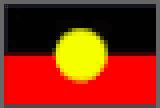Patient Health Questionnaire PHQ-9
Patient Health Questionnaire PHQ-9 overview
Creator and Context
The Patient Health Questionnaire (PHQ-9) is a self-administered diagnostic tool for assessing depression severity. It forms the 9-item depression module of the larger Patient Health Questionnaire (PHQ). The PHQ-9 focuses on the various criteria for depressive disorders as outlined in the Diagnostic and Statistical Manual of Mental Disorders (DSM).
The PHQ-9 was developed as part of the larger PHQ by Drs. Robert L. Spitzer, Janet B.W. Williams, Kurt Kroenke, and colleagues. It was designed to facilitate the identification and management of depression in primary care settings, though it is also widely used in other clinical environments and research.
Presenting Conditions
The PHQ-9 specifically measures the severity of depression symptoms, such as:
Little interest or pleasure in doing things.
Feeling down, depressed, or hopeless.
Trouble falling or staying asleep, or sleeping too much.
Feeling tired or having little energy.
Administration
The PHQ-9 is a self-administered questionnaire. Patients rate the frequency of each symptom over the past two weeks using a 4-point scale, ranging from 'not at all' to 'nearly every day'.
Desired Audience
This tool is intended for use with adults, particularly in primary care settings, but is also applicable in mental health and research settings.
The PHQ-9 can be used for screening for depression, measuring the severity of depression symptoms, and monitoring treatment response over time.
Considerations
While the PHQ-9 is a valuable screening tool, it is not a substitute for a clinical diagnosis.
Scores should be interpreted in the context of the individual's overall clinical picture.
Cultural and linguistic factors may influence responses.
How to score the Patient Health Questionnaire PHQ-9
Conducting the assessment
Patients respond to each of the 9 questions based on their experiences over the last two weeks, using a 4-point scale to indicate the frequency of each symptom.
Interpretation
Each item is scored from 0 to 3, with the total score ranging from 0 to 27. Higher scores indicate greater depression severity. Specific cut-off points identify the levels of depression severity.
Scores of 5, 10, 15, and 20 represent cut-offs for mild, moderate, moderately severe, and severe depression, respectively.
Scores of 10 or higher typically warrant further evaluation for depressive disorders.
Clinical Considerations
The PHQ-9 can be used to screen patients for depression in primary care.
It aids in monitoring symptom severity and response to treatment.
Clinical judgement should be used alongside PHQ-9 scores for comprehensive assessment.
Patient Health Questionnaire PHQ-9 use cases
Screening for depression in various clinical settings.
Monitoring the effectiveness of treatment for depression.
Research into the prevalence and severity of depressive symptoms.
Category
Depression
Research Summary
Kroenke, K., Spitzer, R. L., & Williams, J. B. (2001). The PHQ-9: Validity of a brief depression severity measure. Journal of General Internal Medicine, 16(9), 606-613.
Martin, A., Rief, W., Klaiberg, A., & Braehler, E. (2006). Validity of the Brief Patient Health Questionnaire Mood Scale (PHQ-9) in the general population. General Hospital Psychiatry, 28(1), 71-77.
Other Assessment Guides
Beck Depression Inventory BDI
Explore the Beck Depression Inventory (BDI): a detailed guide covering its use, administration, scoring, and interpretation for assessing depression severity in clinical and research settings.
Edinburgh Postnatal Depression Scale EPDS
Explore the Edinburgh Postnatal Depression Scale (EPDS), a vital tool for identifying postpartum depression. Our guide details its application, scoring, and interpretation, crucial for healthcare professionals in obstetrics, primary care, and mental health.










